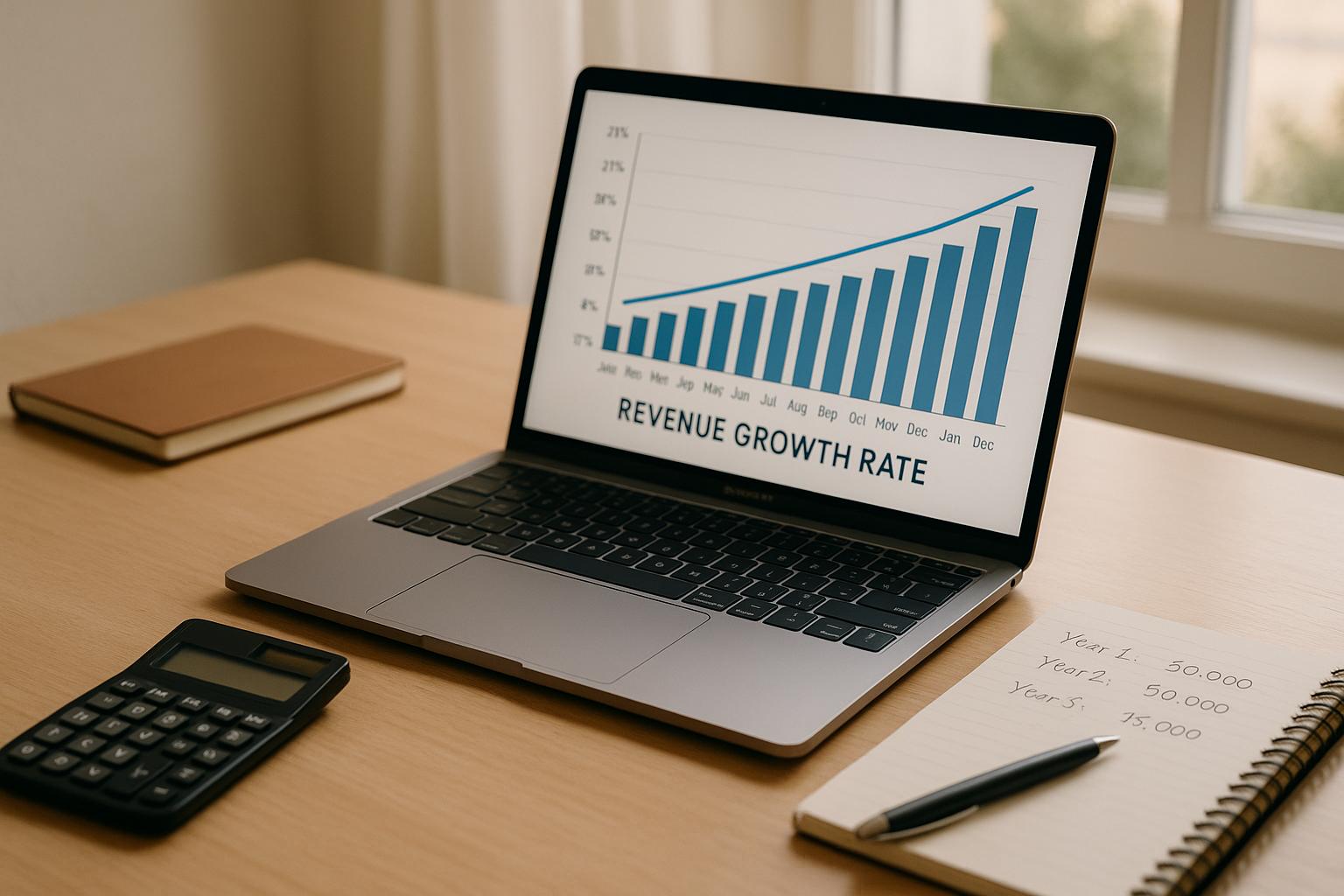How to Build a Credit Risk Framework for Growth

Managing credit risk is essential for businesses aiming to grow while staying financially stable. A well-structured credit risk framework not only minimizes losses but also supports scalable growth by enabling data-driven decisions, clear goals, and aligned teams.
Here’s how to create a strong framework:
- Identify Risks: Categorize risks into preventable (e.g., poor credit checks), strategic (e.g., entering new markets), and external (e.g., economic downturns).
- Assess Creditworthiness: Use financial analysis, credit scoring, and market intelligence.
- Reduce Risk: Adjust credit limits, request collateral, and diversify your customer base.
- Monitor and Report: Use real-time tracking, early warning alerts, and performance metrics like Days Sales Outstanding (DSO).
- Set Policies: Establish clear credit guidelines, roles, and regular reviews.
5 Steps to Implement Your Framework:
- Define risk limits aligned with growth goals.
- Document standardized credit guidelines.
- Leverage data tools like predictive analytics.
- Train staff on policies and tools.
- Regularly review and update your framework.
Building Blocks of Credit Risk Management
An effective credit risk framework relies on interconnected components. Each element plays a role in managing risks while supporting growth.
Identifying and Categorizing Risks
Start by pinpointing and organizing credit risks into three primary groups:
- Preventable Risks: Internal issues like poor documentation, weak credit checks, or inconsistent collection procedures.
- Strategic Business Risks: Deliberate risks taken to grow, such as entering new markets or offering credit to emerging sectors.
- External Risks: Factors outside direct control, like market shifts, economic downturns, or industry-specific challenges.
Methods for Assessing Risk
Combine both numbers and judgment to evaluate creditworthiness:
- Financial Analysis: Review metrics like debt-to-income ratios, cash flow, and working capital.
- Credit Scoring: Use tailored scoring models that factor in payment history, industry trends, and business longevity.
- Market Intelligence: Stay informed on industry trends, economic signals, and sector-specific risks.
Practical Ways to Reduce Risk
Take straightforward steps to limit exposure:
- Adjust credit limits based on customer history and financial health.
- Request collateral or security deposits for higher-risk accounts.
- Spread your customer base across different industries and regions.
- Align payment terms with the level of risk.
Monitoring and Reporting Tools
Use reliable data systems to stay ahead:
- Real-Time Monitoring: Keep track of payment habits, aging reports, and risk signals.
- Early Warning Alerts: Set up notifications for unusual trends or threshold breaches.
- Performance Metrics: Measure key indicators like:
- Days Sales Outstanding (DSO)
- Bad debt ratio
- Collection effectiveness index
Policies and Oversight
Establish clear rules and oversight to keep everything on track:
- Document credit policies and approval processes.
- Assign roles and responsibilities across teams.
- Schedule regular reviews to update risk policies.
- Develop escalation procedures for high-risk situations.
These components work together to create a structured and effective approach to managing credit risk.
5 Steps to Build Your Risk Framework
These five steps will help you put your credit risk framework into action. A well-designed credit risk framework strikes the right balance between growth and stability. Here's how to build a system that works:
Set Risk Limits
Start by setting clear risk limits. Define maximum exposure per customer, spread out risk across industries and regions, and establish minimum credit metrics. Make sure these limits align with your growth goals and overall risk tolerance.
Write Credit Guidelines
Document everything needed to standardize credit decisions. This includes required financial data, approval thresholds, payment terms, collateral requirements, and triggers for review. For example, keep an eye on customer payment behaviors or accounts nearing their credit limits to act quickly when needed.
Use Data and Tech Tools
Take advantage of tools like automated scoring, predictive analytics, and real-time dashboards. These technologies provide continuous insights and can make credit decisions faster and more accurate.
Staff Training
Train your team on credit policies, risk assessment methods, compliance requirements, and how to use relevant technology. Regular refresher courses with real-world scenarios will keep their skills sharp.
Review and Update
Consistently review your framework to ensure it stays effective. Audit how your portfolio is performing, adjust risk limits and policies as needed, and monitor metrics like default rates, risk-adjusted returns, and decision-making efficiency to keep scaling successfully.
sbb-itb-e766981
Common Problems and Solutions
When refining your framework, you'll encounter practical challenges in balancing growth with risk management. Here’s how to tackle them effectively.
New Business Data Gaps
For growing companies, assessing creditworthiness can be tricky due to limited financial history. To bridge this gap, consider alternative data sources and qualitative insights:
- Bank statements and cash flow: Review 3–6 months of transactions to understand how the business manages its funds and working capital.
- Industry benchmarks: Compare key metrics with similar businesses in the same sector to spot trends and anomalies.
- Management experience: Look at the leadership team’s track record and industry knowledge.
- Market position: Evaluate strengths like competitive advantages, customer relationships, and market share.
- Payment history: Check trade references to assess reliability in settling payments.
For startups or early-stage companies, set tiered credit limits. Start small and increase limits gradually, based on payment performance and business growth. Keep an eye on indicators like revenue growth, customer concentration, and burn rate to fine-tune credit terms as needed.
Once you’ve addressed data gaps, shift your focus to balancing growth goals with calculated risk adjustments.
Growth vs Risk Trade-offs
Balancing growth and risk requires thoughtful, data-driven strategies.
Dynamic Credit Limits
Adopt a flexible credit limit system that scales with customer growth. Begin with conservative limits and adjust based on:
- At least 6 months of consistent payment history
- Revenue growth trends
- Profitability metrics
- Industry-specific risks
Risk-Based Pricing
Tailor pricing to reflect varying levels of risk:
- Require deposits or upfront payments from higher-risk customers.
- Offer early payment discounts to encourage faster settlements.
- Consider credit insurance for larger exposures.
Portfolio Diversification
Spread risk by diversifying across:
- Industry sectors (limit any single sector to no more than 20% of your portfolio)
- Geographic regions
- Different customer size segments
- Varied payment terms
Conclusion
A solid credit risk framework protects your business while enabling growth. By using structured assessments, clear guidelines, and data-driven monitoring, you can make sound credit decisions that balance risk and opportunity.
The benefits of such a framework are evident in success stories:
"PSG saved my dream. They helped us get our financials in order and renegotiate our lending agreements, pulling us through a tough financial crunch", says Norman Rodriguez, Founder/CEO of ElevateHire, emphasizing the value of professional credit risk management.
Phoenix Strategy Group combines cutting-edge technology with financial expertise to create tailored credit risk frameworks. These frameworks help businesses:
- Develop accurate risk assessment metrics aligned with growth goals
- Monitor key credit indicators in real time
- Establish scalable processes that grow with your company
- Build data-driven forecasting models for informed decisions
"As our fractional CFO, they accomplished more in six months than our last two full-time CFOs combined. If you're looking for unmatched financial strategy and integration, hiring PSG is one of the best decisions you can make", shares David Darmstandler, Co-CEO of DataPath.
Regularly reviewing and updating your framework ensures it evolves with market conditions and your business growth.




